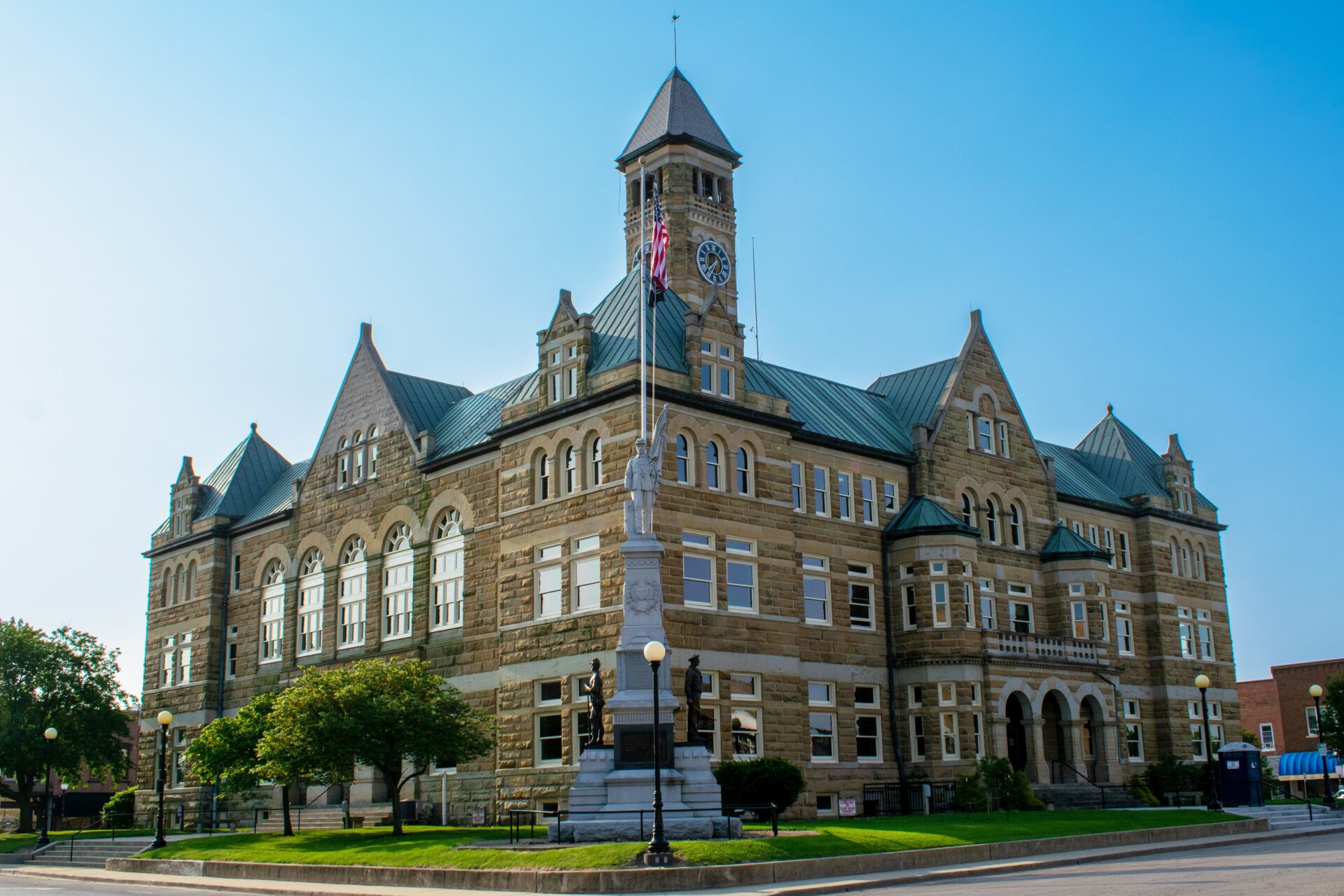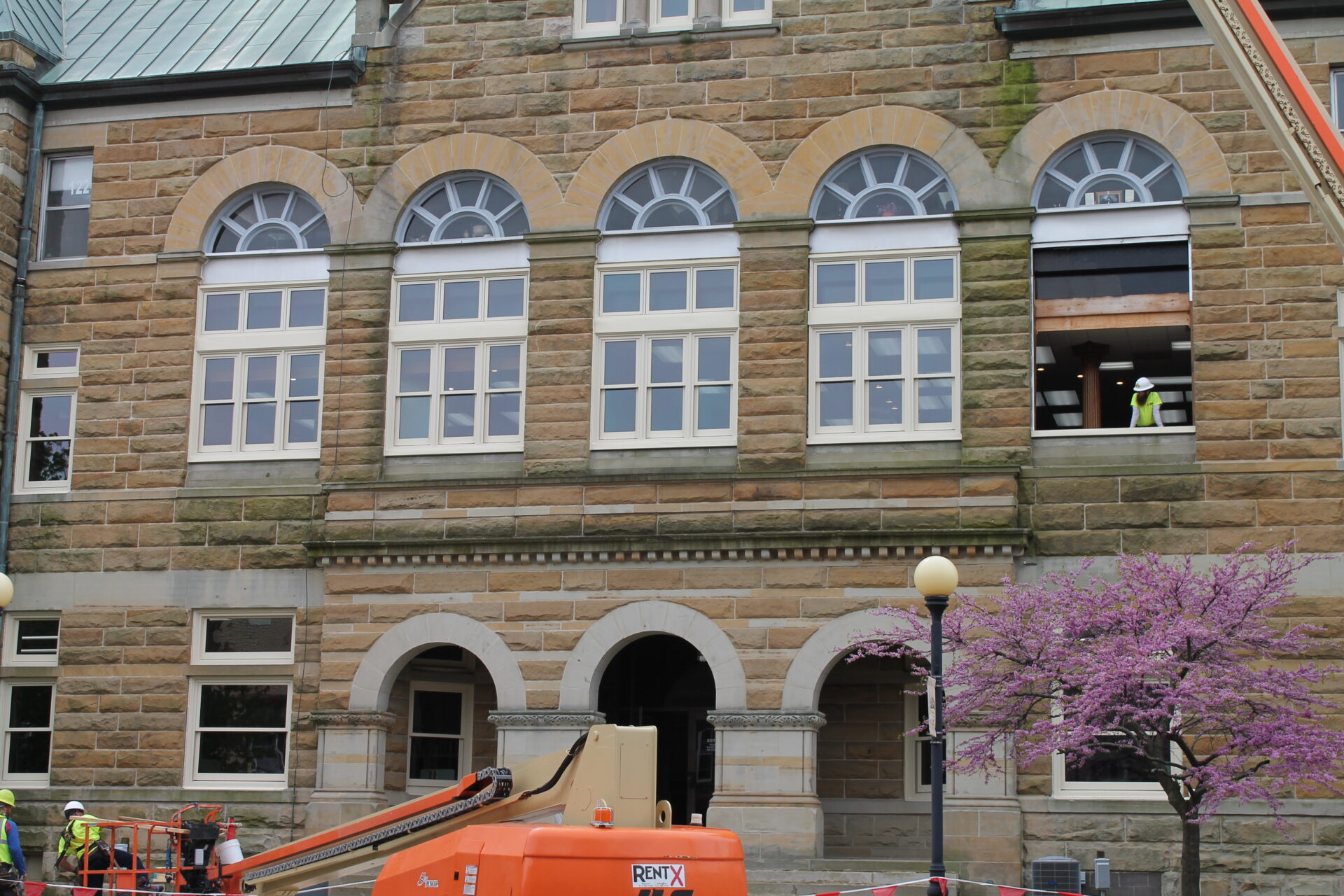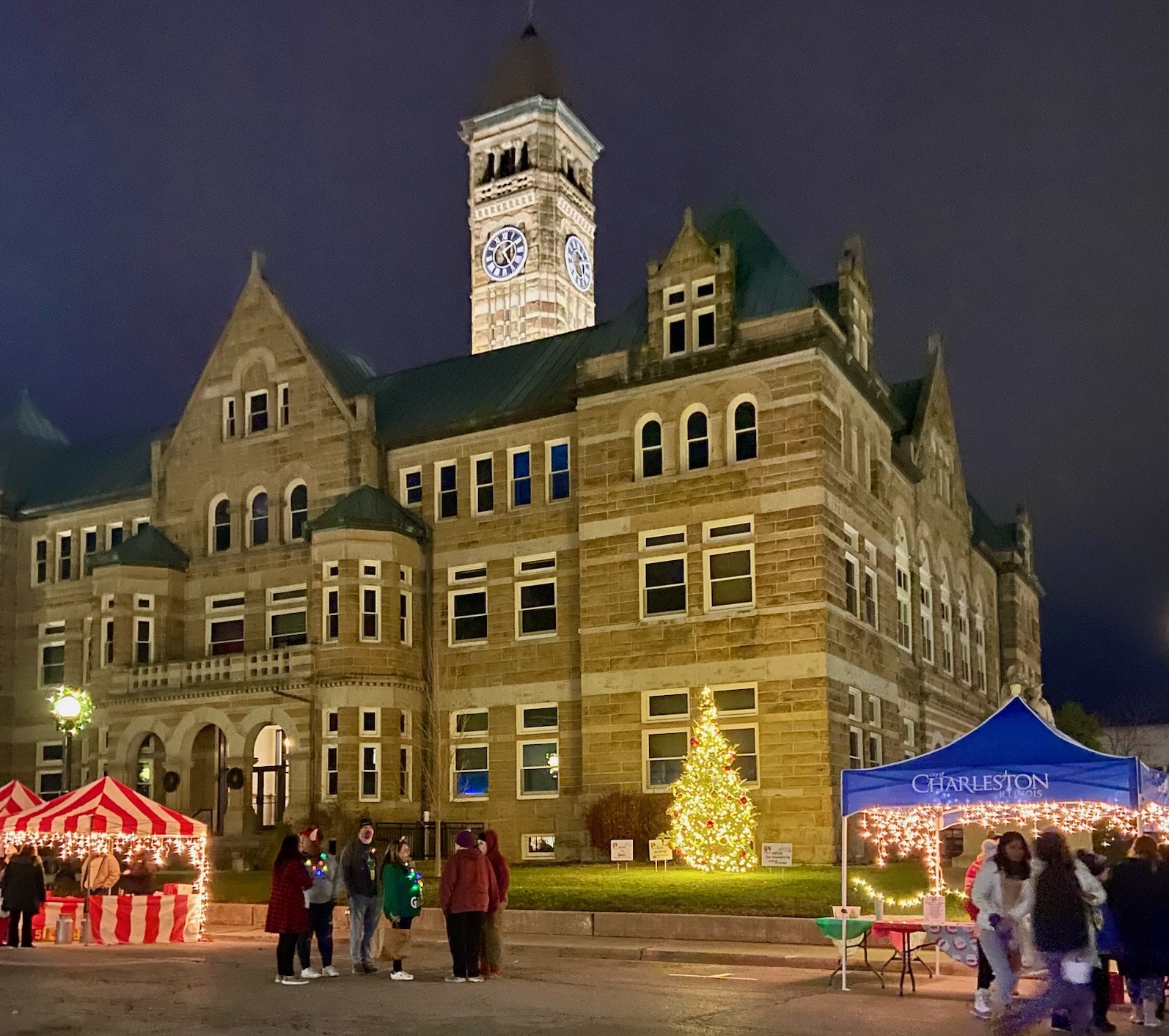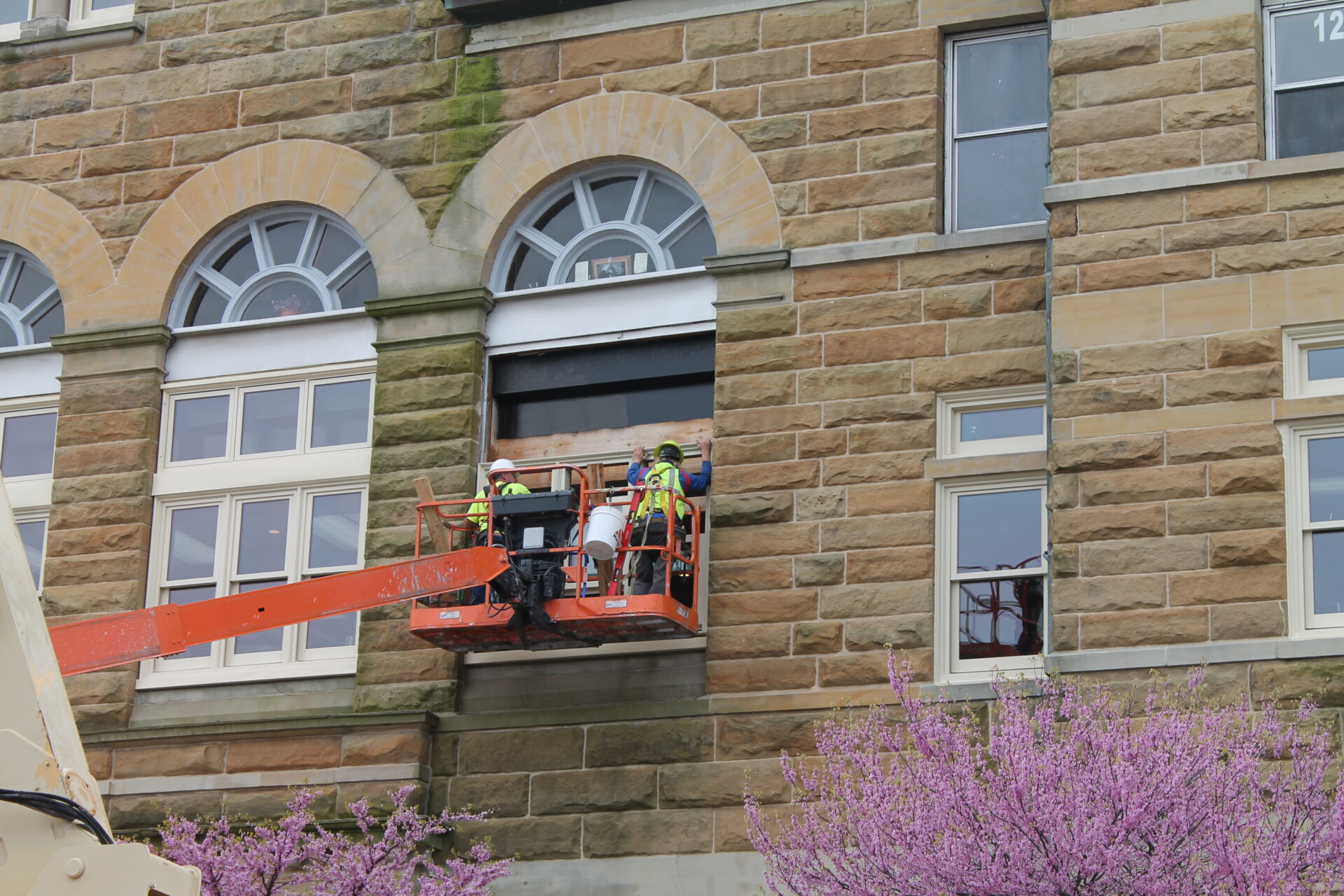2025 Landmarks Illinois Richard H. Driehaus Foundation Preservation Award for Environmental Sustainability
In 2024, Coles County wrapped up a two-year effort to replace 384 deteriorating windows on its historic courthouse, significantly improving energy efficiency at the 125-year-old building. Constructed between 1898 and 1900, the Coles County Courthouse was designed in the Richardsonian Romanesque style by C.W. Rapp, one of the brothers behind the famed architectural firm Rapp & Rapp that designed the Chicago Theatre and other well-known movie palaces. Located in downtown Charleston, the National Register-listed courthouse is among the most significant and prominent historic structures in Coles County and a popular gathering spot for community events. In 1966, the county replaced the courthouse’s original windows with aluminum windows that did not match the style of the building. Those windows deteriorated over the next six decades, creating an eyesore for the local landmark. The latest Coles County Courthouse Window Project involved installing historically appropriate custom aluminum-clad wood windows, replicating the design of the original courthouse while meeting guidelines of the National Register of Historic Places. The project has been transformative for the community. Not only has it drastically improved the look and sustainability of the historic Coles County Courthouse, but it has also inspired other local preservation projects and sparked economic development for the largely rural and historically economically distressed area.
(Photo credit: Noah Spence)





